They got me.
They knew exactly what they were doing, and I fell straight into the trap they set for me.
Okay, it’s not like I got kidnapped or anything, but I did succumb to my weak human willpower.
Here’s what happened: I shopped online for an overpriced pair of sunglasses I adored and left them in my shopping cart, patting my back that I saved money and didn’t follow through with the rest of the purchase process.
But then, a few days later, when I had almost but not quite forgotten my close call, the sunglasses brand popped up in my inbox. But this time, there was a special coupon code and a picture of the shades I was thiiiiiis close to buying.
This gentle nudge was enough to send me over the edge, hightailing it back to their site, and finally buying the glasses. I did exactly what the brand’s email marketer wanted me to do. But hey, now I have the coolest shades on the block. 😎
This worked because the brand had an effective, well-timed, and personalized email marketing strategy to win the sale, quickly turning my experience from an abandoned cart to a conversion.
In this post, we’ll dive into 12 easy ways you do just that by developing a successful email marketing strategy that boosts sales.
- What is an email marketing strategy?
- 12 simple ways to develop an effective email marketing strategy
- 1. Identify and set your email marketing KPIs
- 2. Select an email marketing planning template
- 3. Identify your target audience
- 4. Determine your email marketing schedule
- 5. Write click-worthy subject lines
- 6. Create an attractive design for your email marketing campaign
- 7. Include clear CTAs
- 8. A/B test your emails
- 9. Monitor your metrics
- 10. Stand out from the crowd
- 11. Use personalization
- 12. Optimize for mobile
- Wrap up on email marketing strategies
Subscribe to our weekly newsletter for tips so good that we might put ourselves out of business.
What is an email marketing strategy?
An email marketing strategy is a plan or approach for achieving brand goals via email marketing. Marketing emails can work toward multiple goals, helping your business
- nurture leads
- build rapport with new customers
- maintain relationships with existing customers
- improve customer retention
- educate subscribers on new product announcements, company updates, and more
- streamline communication (e.g., automated appointment reminders and review requests)
- build your brand to increase affinity and loyalty
- generate website traffic
- drive conversions, sales, and upsells
Without an email marketing strategy, your business is missing out on these massive, cost-effective opportunities.
In fact, email marketing is the singular marketing channel with the highest ROI. According to Litmus, every $1 spent on email marketing results in a $36 return. This is especially true for businesses in retail, eCommerce, and consumer goods, where the ROI is a whopping 45:1.
Because of its affordability, email is an essential marketing tool that’s accessible to organizations of all sizes—from small businesses to enterprise clients.
It’s increasingly valuable, too. As software updates, privacy laws, and algorithm changes limit tracking and data collection, it’s more and more critical to have first-party data that doesn’t rely on cookies.
We don’t anticipate this trajectory of increased privacy changing any time soon. Now is the time to stop neglecting email or discounting it as old school and to start developing an email marketing strategy that pays for itself many times over.
12 simple ways to develop an effective email marketing strategy
Let’s put this talk into action, shall we? Here’s what you need to do to create an email marketing strategy that boosts sales and catapults your marketing goals forward.
1. Identify and set your email marketing KPIs
How do you know if your email marketing strategy is working if you don’t even know what you’re working towards?
The first thing you need to do when creating your strategy is to identify and set key performance indicators (KPIs). These are some of the most important email metrics you’ll want to pay attention to:
- open rate
- click-through rate (CTR)
- conversion rate
- unsubscribe rate
- deliverability rate
- bounce rate
- forwards
Once you’ve established your KPIs, you can use them to measure your campaigns’ success, A/B test to see what works best, and tweak your content strategy to ensure you’re delivering the type of email content your customers want to see.
2. Select an email marketing planning template
The right email marketing planning template will help you stay organized when strategizing your email campaigns. Your planning template should include the email topic, task owner(s), project status, send dates, and audience (including suppression list if needed).
You may also want to include sections for result tracking to keep everything in one place.
Whether you use a regular spreadsheet as your planning template or a project management tool like Asana or Trello, choose the format that works best for you.

3. Identify your target audience
An ill-defined target audience can push your contacts to hit the unsubscribe button before you can blame the intern.
The key to a successful email marketing campaign is reaching the right target audience. Not every campaign will be relevant to your entire subscriber list.
For example, accidentally sending an introductory welcome email intended for new subscribers could be a major turn-off to your existing customers.
So, to ensure you send the right message to the right segment of your audience, your list of email subscribers should be segmented based on the customer data in your CRM.
These are some common ways of segmenting your audience:
- geographic location
- lead status or position in funnel
- past purchases
- demographics [age, gender, etc.]
- survey or quiz results
- website behavior
- email engagement
List segmentation is an important precursor for personalization and can help you maximize the results of your email campaign. Another important aspect of identifying your target audience is ID’ing who is NOT your intended target.
You can do this by using a suppression list to exclude specific segments of your email list.
4. Determine your email marketing schedule
I hate to break it to you, but no matter how great your products/services/company is, your subscribers don’t want to hear from you all day, every day.
And if you’re marketing a B2B brand, your audiences likely aren’t interested in your promotional emails after business hours.
Creating an email marketing schedule helps keep you and your team on track while best serving your audience. Will you schedule to email during only business hours? Will you leverage automation?
You’ll need to experiment and A/B test different schedules to nail down the best time for optimal results.
5. Write click-worthy subject lines
A good email subject line is *chef’s kiss*. 🤌
And, ultimately, it’s what differentiates an email that gets opened vs. ignored.
Since this is the first piece of content recipients will see after your sender name, enticing them with an ultra click-worthy subject line is a must.
Check out these email subject lines from Postmates and The New York Times:


Pro tip: A/B test your subject lines to understand what type of email content resonates most with different segments of your audience. Oh, and don’t be afraid to use emojis. Using them is a great way to stand out in the inbox. 📥
6. Create an attractive design for your email marketing campaign
The subject line is your hook, and the email design is your reel.
Great email design not only builds trust and credibility in your brand, but it also helps capture the attention of your recipients to ensure they actually read your message.
You’ll need to ensure your colors, fonts, and imagery are on-brand, easy to read, and engaging.
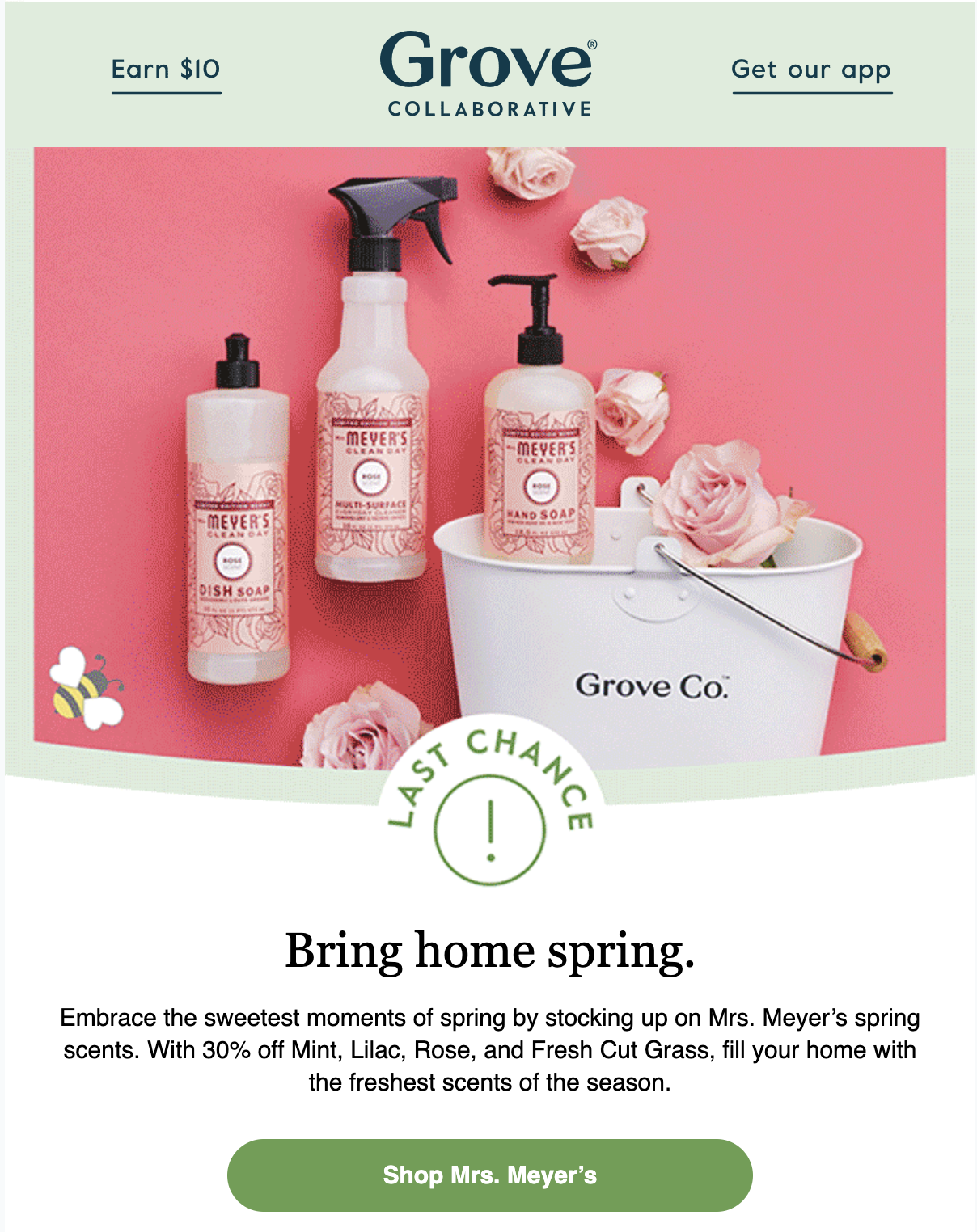
If you’re not a designer, don’t worry.
An email service provider like Mailchimp, HubSpot, or Constant Contact should include easy-to-use builders that help you develop great email designs and templates.
Need more inspiration? Check out our roundup of 50 email examples to get the ideas cooking.
Have your copy and design work together
Speaking of design: your copy and design shouldn’t compete against one another—they should complement each other.
Design can help keep your message from being too text-heavy, and the copy can add context to the design and imagery.
Use your design to make your content skimmable so your message is received clearly and quickly. Let them work together to make magic happen.
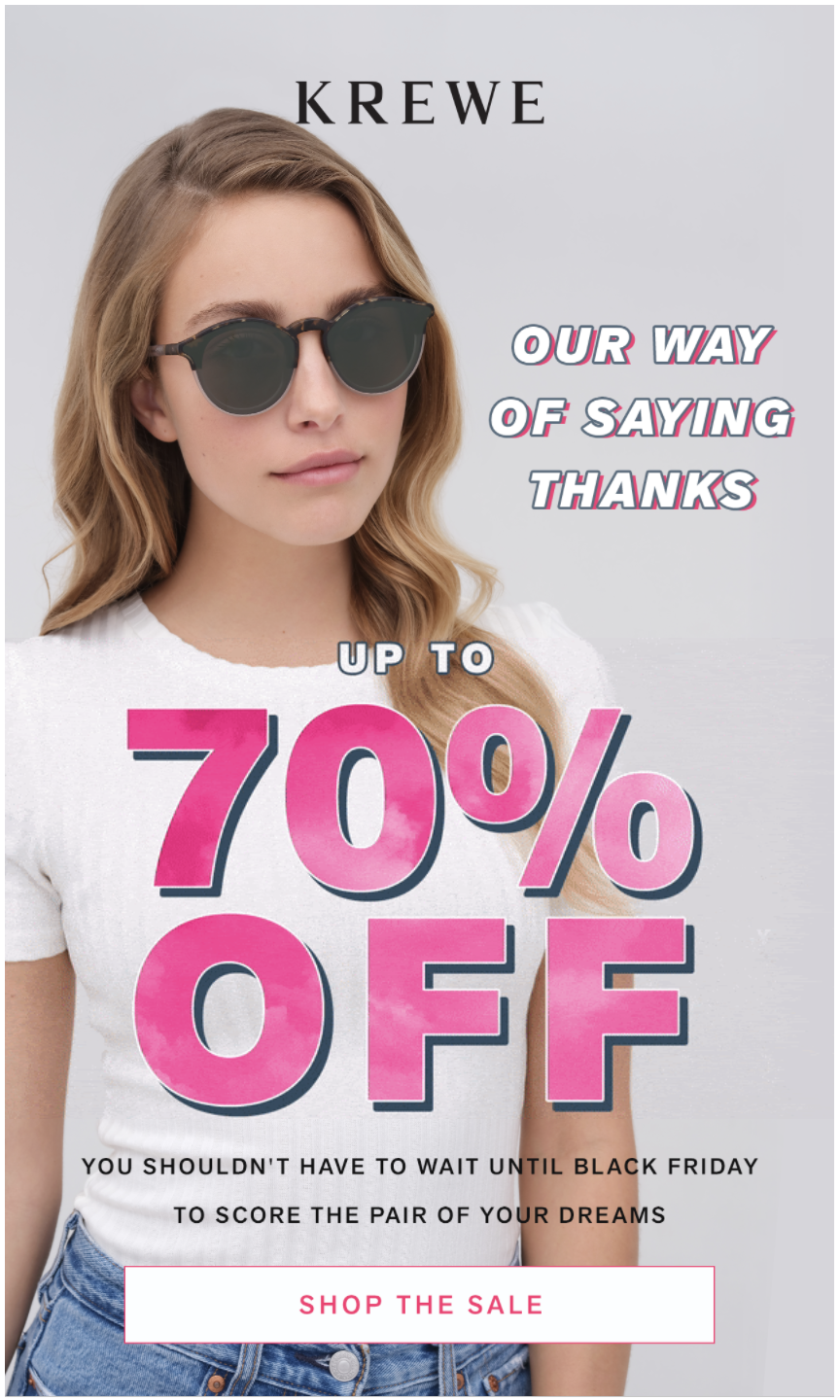
7. Include clear CTAs
We’ll keep this point short and to the point.
Be clear in what your recipients should do next. Add can’t-miss CTA buttons to drive your audience to action.
Clear CTAs are a must for all of your marketing efforts—not just email.
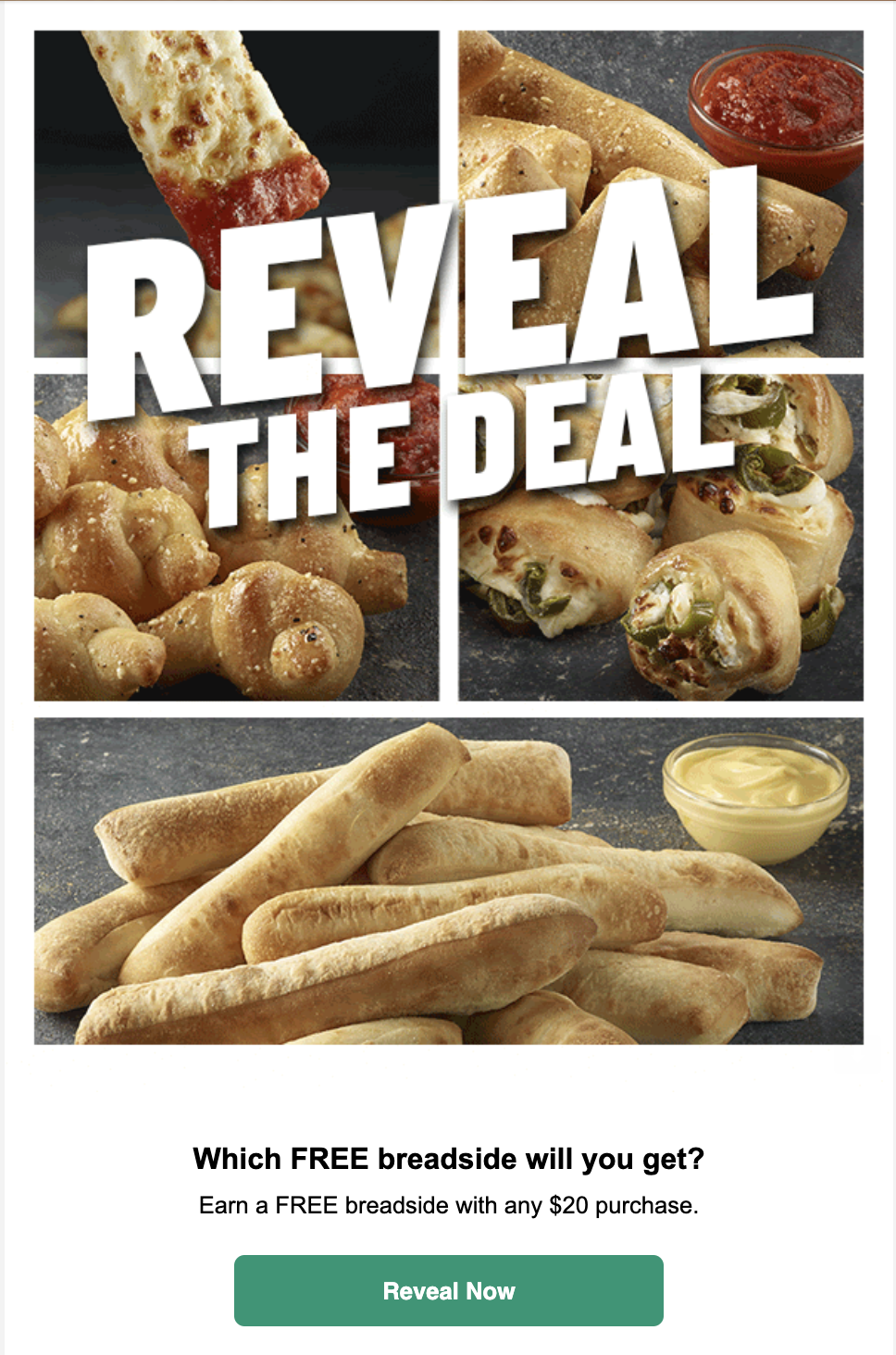
8. A/B test your emails
Test, test, and test some more.
A/B testing your emails provides meaningful insights so you can understand what works best and optimize your next campaigns for the best results.
There are multiple criteria to evaluate when it comes to email marketing, from messaging testing to audience testing.
You could also try different variations of subject lines to see which yields the best open rate or test your CTAs, images, and copy for the best conversion and click-through rates.
Remember to change only ONE element (like the subject line) at a time when split testing.
If you change multiple elements like the subject line and email copy, your A/B test results will be inconclusive since you’ve introduced too many variables.
9. Monitor your metrics
Don’t leave your email campaigns on autopilot.
To get the most out of your email marketing strategy, stay on top of the KPIs you’ve set from step #1 so you have a firm grasp of what’s working and what’s not.
This can guide your email strategy moving forward and even help inform your other digital marketing channels, like social media and PPC.
10. Stand out from the crowd
Make your emails unique and interesting.
I, for one, look forward to The Hustle’s email newsletter every day. They put a fun spin on the stories and topics everyone is talking about with quirky GIFs, casual writing, and a mix of bite-size and in-depth coverage.
Even though I may get multiple emails from different sources about the same story, The Hustle’s version is the one I always look forward to because it stands out from the crowd.
Take a peek at how they covered Elon Musk purchasing Twitter:
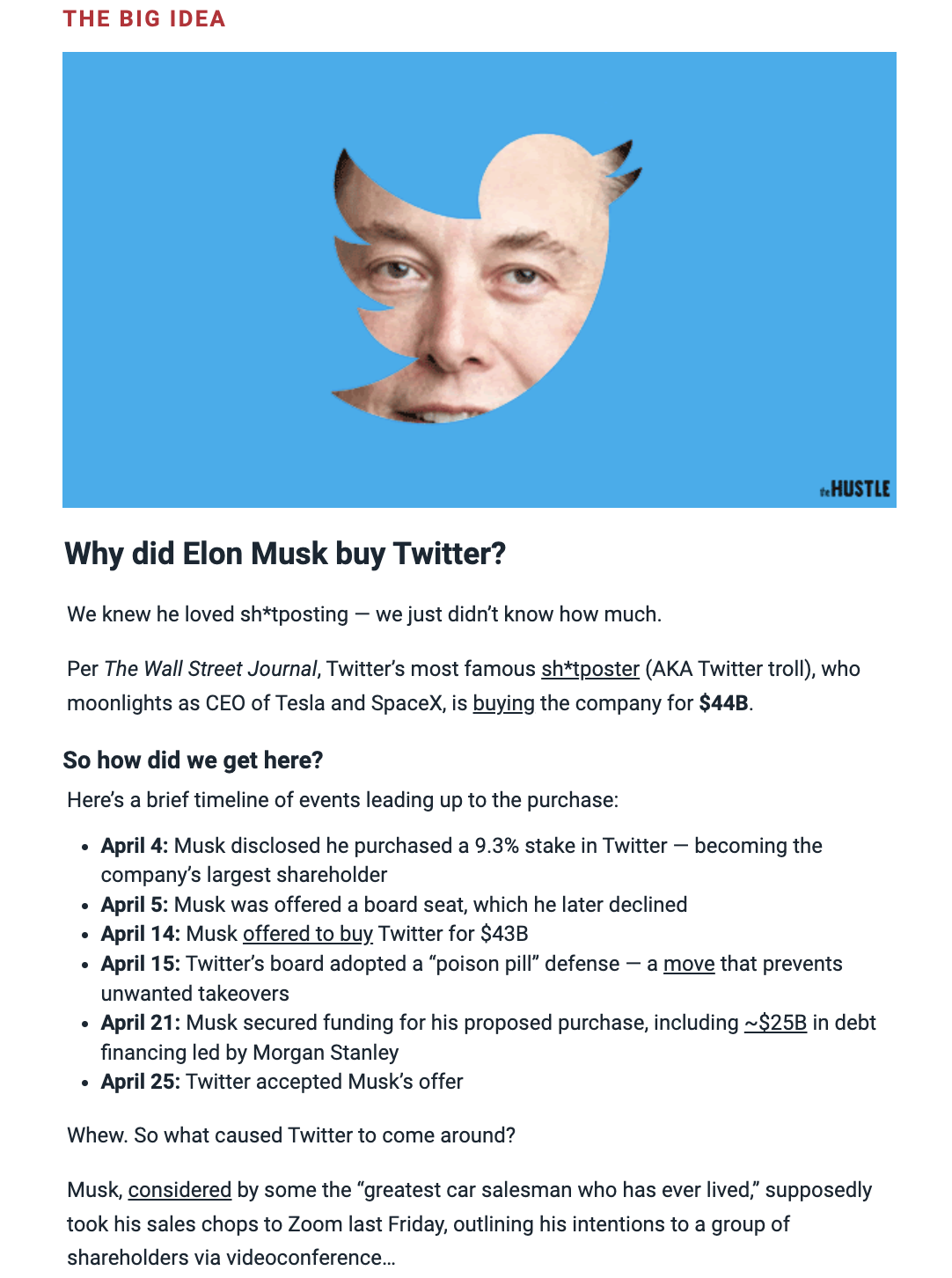
11. Use personalization
Who doesn’t like feeling like they’re one in a million? Emails with a personalized subject line (“JD, you forgot your sunglasses!”) are 26% more likely to be opened. Relevance and personalization are key to some of the best emails.
Utilize the information you have in your CRM to not only add subscribers’ names to subject lines and email copy, but also to send birthday and anniversary messages, tailored recommendations, and more.
Personalization doesn’t have to be burdensome, either.
You can easily include personalization in your automated emails by creating triggers based on subscriber behavior.
12. Optimize for mobile
Even though you may spend all day checking work emails on a desktop, that doesn’t mean your target audience is doing the same.
In fact, more than 70% of people read their email in a mobile app.
Here are some easy optimization tips to make sure your emails look great on both desktop and mobile devices:
- use a responsive template
- keep copy brief
- reduce image file sizes
- make sure your design works for both light and dark mode
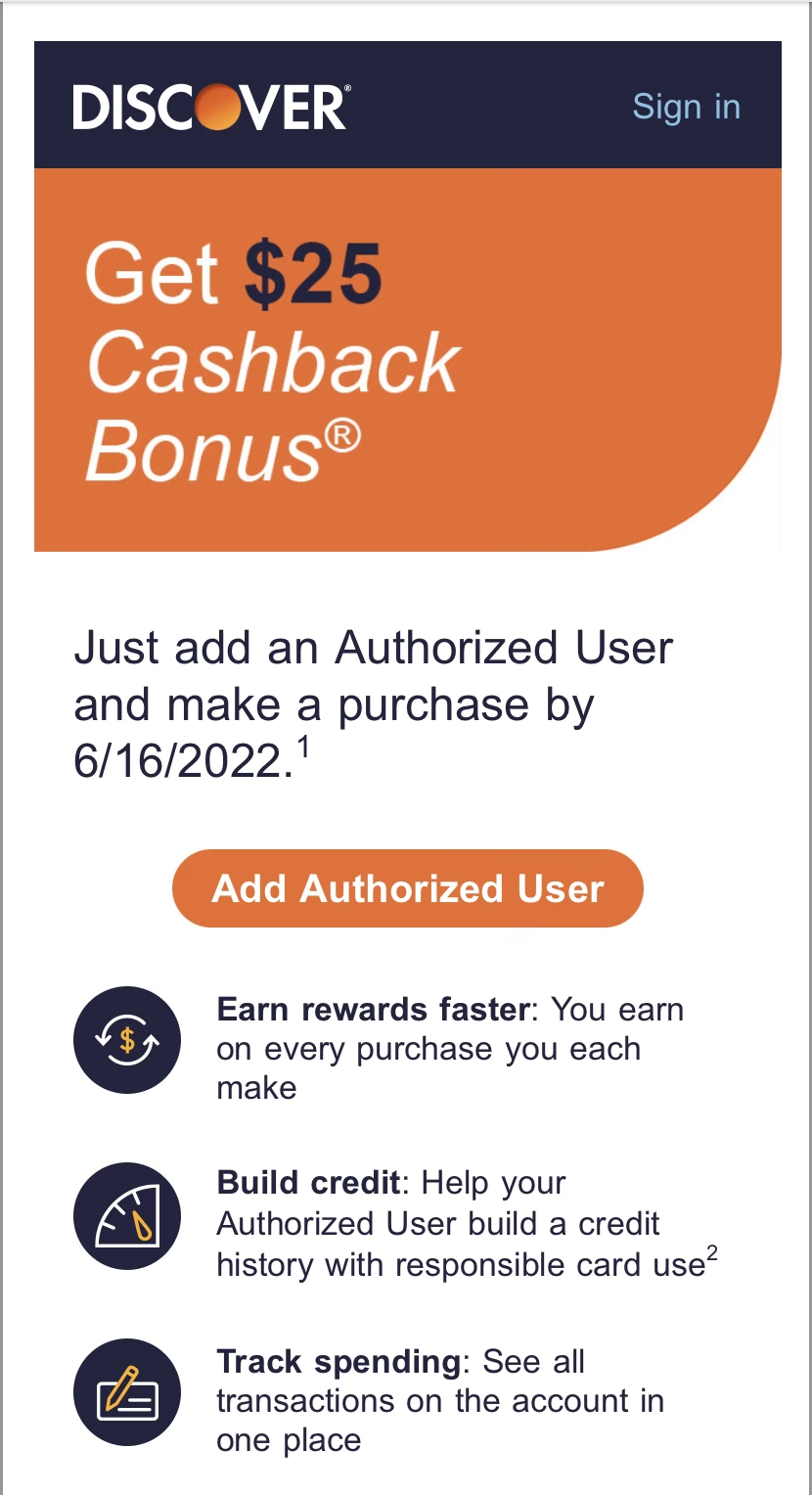
Wrap up on email marketing strategies
There you have it—a step-by-step breakdown of how to create an awesome email marketing strategy.
You’re ready to put your email marketing strategy into action to boost sales, build customer loyalty, and keep your subscribers in the loop. Maybe some of these steps can even revive your inactive subscribers, too.
But if you need some more help along the way to a killer email marketing strategy, don’t worry—we’re here for you.
